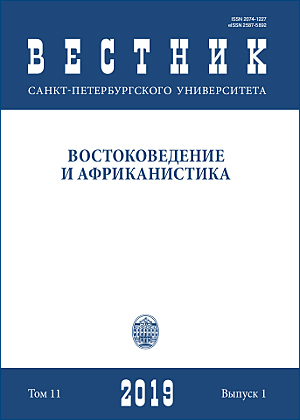The Evolution of Russia’s Image in China in the early 20th century: Key Factors and Research Methodology
DOI:
https://doi.org/10.21638/spbu13.2019.102Abstract
The paper features a study of one of the key stages in the process of evolution of Russia’s image in China, namely, the beginning of the 20th century. The interformational and intercivilizational nature of Chinese society in that period predetermined the necessity for social and political institutions to balance between the monarchy and the republic, while in the public consciousness it caused a desire to begin an active search for new paths of development associated with borrowing some patterns from cultural traditions and social practices of other societies. The author believes that it was precisely those circumstances that largely determined the formation of an ambivalent image of Russia at that time. In the beginning of the 20th century, Russia’s image in China was simultaneously that of an “aggressive” northern neighbour and that of a country with a rich spiritual heritage worth learning and getting experience from. The article discusses importance of translations of Russian literature for the formation of Russia’s image in China in the early 20th century and a role of Chinese revolutionaries in construction of the image of the Russian Revolution. The article also considers some methodological approaches to the study of images and stereotypes. Nowadays studying national and ethnic images and stereotypes in the current context becomes extremely important, having considerable scholarly and practical significance.
Keywords:
China, image of Russia, imagology, Zhongguo Tongmenghui (Chinese United League), Qing Dynasty
Downloads
References
Downloads
Published
How to Cite
Issue
Section
License
Articles of "Vestnik of Saint Petersburg University. Asian and African Studies" are open access distributed under the terms of the License Agreement with Saint Petersburg State University, which permits to the authors unrestricted distribution and self-archiving free of charge.





